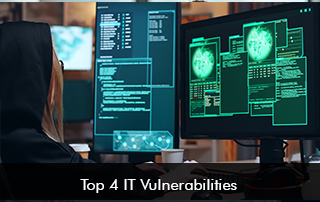The healthcare sector has become digitized which has its benefits of improved patient care and automation of workflows to improve efficiency levels. With more personal identifiable information stored in applications and cloud-based EMR software systems, there is always a risk of online attacks.
In the age of digital technology solutions, it is critical that medical practices and healthcare organizations keep up to date with the necessary security protocols and also know the relevant IT vulnerabilities to look after and stay protected.
What is an IT vulnerability?
An IT vulnerability is when there is a weakness or a shortcoming in an IT software system that can be exploited on purpose or accidentally to interrupt the system’s security. When a system is vulnerable it can potentially expose important information such as PII data.
Importance of strong security protocols
A large number of data is available on healthcare IT systems which makes it important for practices to stay on top of all security methods to secure and protect patient and practice data around the clock. Practices need to establish a strong security culture from top to bottom by protecting mobile devices, the use of firewalls, allowing only controlled access to Protected Health Information, and installing and maintaining anti-virus software.
Most common IT vulnerabilities practices should know about
Healthcare organizations need to be aware of the different exploitation methods with diverse attack methods. Once practices are mindful they are in a confident and better position to protect their healthcare systems from such attacks. According to the Department of Health and Human Services, top vulnerabilities in the healthcare sector include the following,
- BrakTooth – This is comparatively a new family of IT vulnerabilities that impacts Bluetooth-enabled devices and crashes the firmware or creates a deadlock condition where Bluetooth cannot be used, which damages the code. If a practice faces such an attack they should touch base with their ISAC or ISAOS.
- Conti Ransomware – Conti ransomware is when healthcare-sensitive data has been stolen and is only released on a ransom.
- Hardening Remote Access VPN – Remote access VPN servers have provided a doorway for malicious attackers who can access secure networks. It is recommended that healthcare organizations use VPNs but select standard-based sources.
- Medusa Tanglebot – This malware is spread by sending a COVID-19 message on Android devices. Users that are tricked would install the malware application onto their device or phone which can be used to gather data on the user. To avoid the Medusa Tanglebot IT vulnerability practices must practice safe and secure downloading methods.
To avoid being a victim of a cyber-attack, practices should take all necessary protocols and take precautionary measures. It is important to use HIPAA-compliant software solutions for end-to-end encryption and implement healthcare IT security training.






